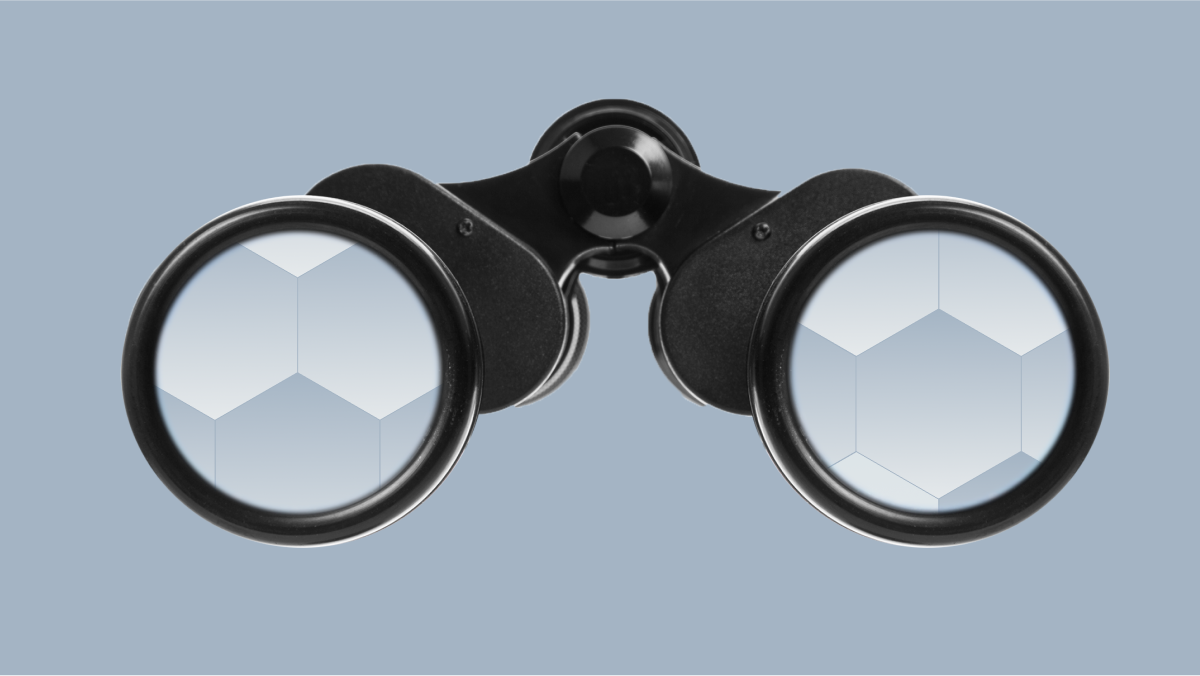How To Build The Right Tech Foundation Within Your Resources
How To Build The Right Tech Foundation Within Your Resources
A building is only as strong as its foundation — and the same can be said for a business and its tech. Your tech supports everything you build online, and it plays a role in almost every way you interact with your customers.

IT leaders are under a lot of pressure: they need to build the right tech foundation at their organizations and make strategic decisions that drive innovation and growth. At the same time, they can't abandon every technology they've already invested in (especially in a challenging macroeconomic environment). Many are struggling with bloated tech stacks and/or vendor lock-in, so they're looking for what they can do differently without going over budget.
These challenges suggest why the Digital Experience Platform (DXP) market is growing. (A DXP consists of several core solutions – typically from varying vendors – that integrate with each other and encourage the creation, management, and delivery of digital experiences.) In simpler language, DXPs play a critical role in today's digital-driven landscape, helping organizations manage existing and new tech to more easily deliver better online customer experiences.
If you work in IT, you've probably already heard about some of the benefits of a DXP:
- Improved efficiency (respond to changes in the market faster)
- Quicker time to build and implement new functionality (resulting in a better consumer experience)
- Cost savings (with a modular approach, you can pay for only the tech you need)
- Multichannel consistency
But how do you get the right DXP — the one that truly provides the right tech foundation for your organization?
Do you build it or buy it? In this guide, you'll learn about the pros and cons of building versus buying a DXP — and about Yext as a composable option for building your DXP.
Option 1: Buy your DXP
 Let's dive into the first option – buying your DXP.
Let's dive into the first option – buying your DXP.
Pro:
1. It comes pre-assembled. If you buy a DXP, there's not much that you have to do to set it up. For example, let's say you purchase a piece of software that bundles together your content management, web development, and site search, you don't need to hire developers to integrate the front-end and back-end of your website. You don't need them to configure site search technology into your website. Everything is ready to go out-of-the-box, and, in essence, all you have to do is turn it on.
Cons:
1. Limited flexibility and customization: Monolithic DXPs that are bought are very difficult to customize to your unique business needs. For example, if you want to change the layout of a website, add a chatbot, improve the search capabilities on your website, or add any sort of business logic – such as form submissions or user authentication — you'll find it to be very hard, if not impossible. This also leads to difficulties with scale, especially as your business grows.
2. Stuck with vendor lock-in: When you buy a DXP, you can become locked into using that vendor for all of its functionality. Let's use the same example as above, where you purchase a piece of software that includes content management, web development, and site search: you cannot substitute or upgrade the site search technology with another vendor. You're stuck using something that's outdated and might not give consumers a great experience on your website.
Option 2: Build your DXP
 The other option is to build — or, in other words, "architect" your DXP by putting together different parts from different vendors (or even your own internal teams). Here are the primary pros and cons of that approach.
The other option is to build — or, in other words, "architect" your DXP by putting together different parts from different vendors (or even your own internal teams). Here are the primary pros and cons of that approach.
Pros:
1. You can customize everything: Building gives you complete control over the design, features, and functionality of your DXP. You can tailor it precisely to your organization's unique needs. Yext can easily integrate with existing tech stacks, providing further support for those who want to completely customize their DXP.
2. You can deliver better customer experiences: Assembling your own DXP allows you to provide consumers who interact with your brand with better, more fulfilling engagements. Building a DXP helps you "wow" your customers with personalized, cutting-edge online experiences – because you are able to pick and choose best-of-breed technologies that you build on.
3. You can still tap into expertise. If you're savvy about how you select your vendors as you build, you get the benefit of their specialized expertise — which is likely different from yours. Ideally, they're an expert in their field — so you don't have to be.
Yext has been in the Listings business for almost 20 years, and — excuse the brag — we have the most robust publisher network in the industry. So, we can provide thought leadership and guidance around specialized topics. For example, when Apple launched Apple Business Connect, we created robust resources about what that meant and how businesses could leverage it. Our customers don't have to be experts about listings, or search, or generative AI — because we are. That's part of what you're paying for with a vendor, and it can offer a good deal of peace of mind.
Con:
1. You actually have to build it: Building a DXP is a time investment; you have to actually assemble the pieces together. As a small to midsize business, you may automatically rule out building a DXP due to the nature of being bootstrapped for time or other resources (but continue reading to learn about Yext before coming to that decision!).
So: should I build or buy my DXP?
 Now that we've given you the options, it's time for some straight talk: everyone prefers the benefits that are offered with building a DXP. Especially as your customers' expectations are at all time highs (and continue to grow every day), the old days of purchasing DXPs from legacy technologies just doesn't cut it anymore.
Now that we've given you the options, it's time for some straight talk: everyone prefers the benefits that are offered with building a DXP. Especially as your customers' expectations are at all time highs (and continue to grow every day), the old days of purchasing DXPs from legacy technologies just doesn't cut it anymore.
Optimizing the customer journey and providing the very best experience online is at the forefront of every IT leader's priorities. In fact, almost 46% of business professionals say customer experience is their top priority. A proper DXP can help accomplish this, one that's built by assembling best-of-breed solutions that work together via APIs. (Don't worry — we'll get into the specifics of this below.)
The TLDR: you can still build a DXP even with limited resources and a small team. We promise we're not just saying this because we're a DXP.
Let's dive into what to look for when putting together your DXP and how to select the right vendor(s) for you.
Time to "build": what to look for when building your DXP
 The key characteristic to look for in a DXP is composability.
The key characteristic to look for in a DXP is composability.
A composable DXP is a platform assembled from a variety of best-in-breed solutions that work together via APIs. They might require more work (or might not if you work with Yext), but they offer businesses the flexibility to build their tech stack their way, and to adapt it over time. It's an architecture, not a sole product: one that can support the connections between various business capabilities so that they can work together and operate independently.
We won't beat around the bush: composable DXPs are the gold standard today. They allow you to:
- Avoid vendor lock-in
- Use technology that integrates seamlessly with your current stack (so you don't have to rip-and-replace what you're already using
- Pick and choose which vendors to build new experiences on top of (extra flexibility and customization)
If you decide to go composable, you'll reap all of these benefits — and stay more agile than competitors.
How to identify composability
One important thing to note before you start your search for a composable DXP: there's a lot of complexity in the tech vendor space, and due to the rise in popularity of composable tech... everyone says they're "composable."
So, how do you know who really is? Look to see if the vendor(s) you're considering are MACH Alliance-certified. (MACH Alliance stands for Microservices based, API-first, Cloud-native SaaS, and Headless. MACH certification serves as an insurance stamp of approval. It provides organizations with confidence that they are choosing best-in-class vendors and implementation partners — those that can and will deliver future-proof technology to help their businesses grow.)
Read more about the MACH Alliance (and Yext) here.
Why you should look to Yext for your DXP
 Now that you're to the point of starting your search for the right composable DXP... here are just a few quick points that differentiate Yext as a DXP option.
Now that you're to the point of starting your search for the right composable DXP... here are just a few quick points that differentiate Yext as a DXP option.
-
Like we just talked about, Yext is MACH-certified. This provides an insurance stamp of approval that Yext is best-in-class — something you want for your vendor no matter which direction you choose to go.
-
With Yext, you can seamlessly manage first- and third-party online experiences. With Yext, you can seamlessly manage first- and third-party online experiences. At the beginning of this piece, we talked about how business leaders are tasked with delivering a better customer experience across more touch points than ever. Given that 52% of online traffic comes from third-party sites like Google, Facebook, Bing, and many others, choosing a vendor that supports both first and third party experiences is crucial to any business's digital success. Yext is the only option for your composable DXP that supports owned and third-party channels from the same hub. (Other DXPs only support built-in first-party.) If your customers are everywhere, you should be too.
-
Yext is truly composable in that you can pick and choose which search experiences to add over time.
For example, as a business that is using Yext to manage listings for locations on third-party sites, you can use the same data to spin up search-optimized websites built on a modern web architecture.
As another example, you could add a chatbot to your website to enhance the overall experience, and acquire more leads. WIth Yext, you can keep innovating and building without having to make major underlying changes.
-
Finally, Yext complements technologies that you already use — so don't have to rip-and-replace. No leader wants to abandon all of their existing tech investments. With Yext, you don't have to.
For example, a business using a different vendor for their commerce platform can still use Yext to build their web infrastructure or layer a better search experience on top of it. That's the power of composability and best-in-breed: you don't have to use Yext for everything (unless you want to).
Conclusion
Choosing the best technology vendors that are composable and always-innovating is the most effective way to deliver the better online experiences at scale. And with a composable DXP option like Yext, you don't have to abandon all of your existing tech from the jump; you can find the balance that's right for you.
Ready for the next step in your journey to architect your DXP? Click here to schedule a demo.




